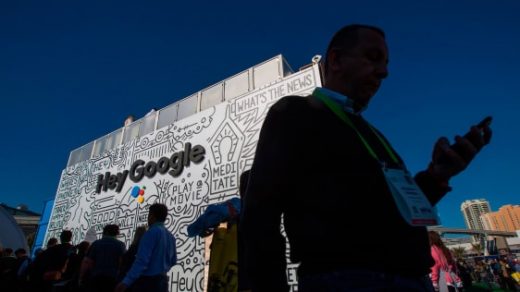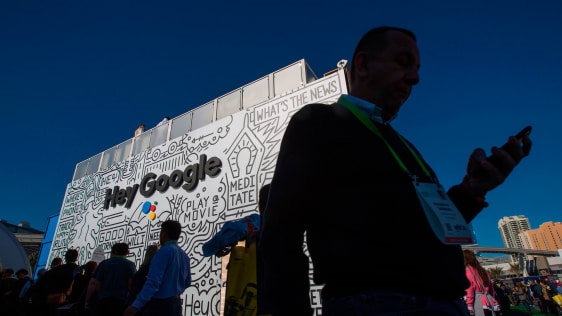How Amazon And Google’s AI Assistant War Made CES Relevant Again
In the nine years that I’ve been going to CES, the most remarkable thing about the giant show has been the lack of tech giants in attendance.
Apple has never been to the event in an official capacity, nor have Google and Amazon in years past. Samsung unveils TVs and other assorted gadgets on the show floor, but saves its most important Galaxy phone reveals for later in the year. Microsoft was once a CES fixture, but ended its traditional keynote and gave up its convention center booth five years ago as the PC’s prominence faded. What was left was a show that tried to capture the industry’s trends without the guidance of its biggest trendsetters.
All of that changed at CES 2018, which at last delivered an overarching theme in the rise of virtual assistants–particularly Google Assistant and Amazon’s Alexa. While neither company announced any new hardware of its own, each enlisted an army of partners to put voice support into speakers, earbuds, TVs, PCs, car dashboards, and countless other gadgets.
All these products have been part of CES for years, but for the most part they lacked the ability to talk to one another. By connecting the sea of CES gadgets to much larger ecosystems, Amazon and Google have presented a vision in which voice commands are available pretty much anywhere, and can control practically any device.
“We fundamentally believe voice is a significant new interface to other technology, to information around you, and it’s grown much faster than we predicted,” Steve Rabuchin, Amazon’s vice president of Alexa Voice Services, told me during an interview at the show. “And our strategy is, we want Alexa everywhere.”
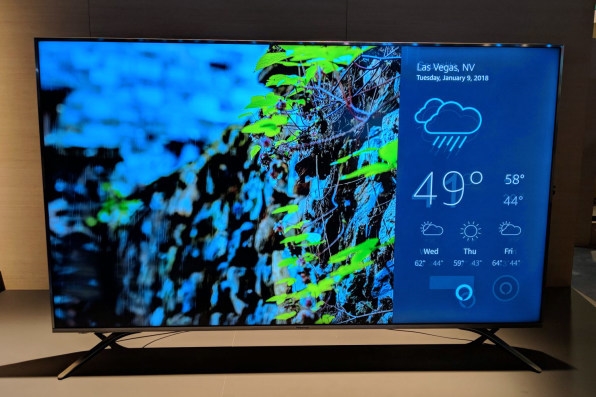
The Great Unification
Televisions, once the biggest part of CES, were the surest indicator of change at this year’s show. In years past, TV makers would use CES to highlight flashy new display technology, such as 3D, 4K, HDR, OLED, and quantum dots. But while most of those technologies have made watching TV more pleasant, they’ve carried no broader impact on the rest of the tech industry.
This year brought a fundamental shift, as TV makers emphasized voice-driven ecosystems over raw hardware improvements. LG, for instance, said it will integrate Google Assistant with its televisions alongside its own ThinQ AI, and several more TV makers signed on with Google’s Android TV platform, which has Google Assistant built-in. One of those companies, Hisense, also showed off a television with an Alexa voice control button on the remote. (Televisions with Amazon’s Fire TV software built in were missing from the show after debuting in 2017, but Amazon tells me it hasn’t abandoned the idea.)
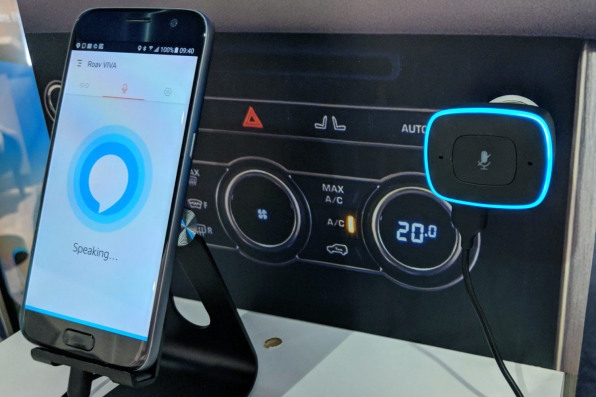
Join The Ecosystem
By building voice assistants into their televisions, TV makers aren’t just adding another way to change the channel. They’re creating deeper ties to the hundreds of other Alexa- and Google Assistant-enabled devices that debuted at the show. You might use Alexa on your television, for instance, to check the video feed from a Ring doorbell, or use Google Assistant-equipped earbuds to start up ESPN on the TV as you get home.
Voice assistants are also spreading to CES’s other product pillars to enable those kinds of scenarios. This year, Amazon announced partnerships with more auto makers, including Toyota, along with an initiative called Alexa Onboard that will bring offline voice controls to vehicle infotainment systems. Google Assistant support is heading to Android Auto, a phone-based system for car dashboards that already works with more than 400 vehicles. Both Amazon and Google are also promising a slew of new voice-enabled headphones and earbuds this year, and Amazon announced new tools that will make Alexa wearables easier to build. Even PC makers joined the trend, with Alexa headed to laptops and desktops from HP, Lenovo, and Acer.
Meanwhile, smart home devices seemed to enjoy a new sense of purpose at CES, with Alexa and Google Assistant promising to simplify control over lights, locks, security cameras, and whole-home audio. During the show, Amazon boasted of 4,000 smart home integrations across 1,200 partners, while Google said its Assistant works with 1,500 devices from 225 brands. (It wasn’t unusual to see devices that supported both voice assistants.)
Gummi Hafsteinsson, the product lead for Google Assistant, doesn’t believe any of these things on their own will amount to a killer product. Instead, he imagines users will have lots of voice-enabled devices, creating a kind of ambient computing that can be used in different contexts.
“There’s a multiplying effect that happens,” Hafsteinsson says. “It’s hard to pinpoint one device and be like, ‘Is that the one?’ I think it’s the combination that’s going to be amazing.”

Sending A Message
A lot of CES analysis so far has focused on the rivalry between Google and Amazon and tried to declare a winner. And both companies did their part to stoke the flames. Google set up a two-story booth outside the Las Vegas Convention Center and reinforced its presence with Google Assistant advertisements around town. Amazon was more of an unseen hand without space on the floor, but held private briefings and sent daily press emails to boast about Alexa’s latest integrations.
Despite the back-and-forth, the question of who “won” CES seems less pressing than what it means to have two major tech companies pushing their own voice assistants so aggressively onto the consumer electronics business. At best, Amazon is a year or so ahead in offering tools that make voice-enabled hardware easier to build; that advantage will likely become less pronounced over time as Google expands its own toolkit. And neither company is overly focused on its own hardware. They want these services to be everywhere.
Ultimately, Amazon and Google both benefit from duking it out at CES. Their presence reinforces the idea that ambient voice assistants are the next big thing in technology, and that hardware makers need to get on board with Alexa and Google Assistant if they haven’t already.
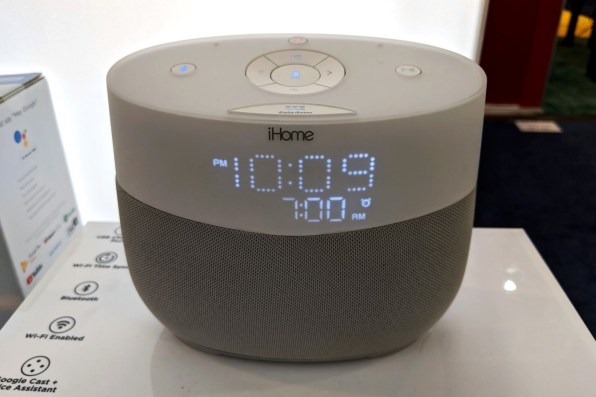
“We’re basically working with whole partner ecosystem, and they’re all here now, so we just want to be here with them to help convey the message, and help them think about it, and spend time to make sure that people understand how this is transforming people’s lives in terms of having ephemeral computing available wherever you want to,” Google’s Hafsteinsson says.
In this sense, the losers are major tech players who didn’t bring clear voice strategies of their own to the show. That list includes Apple, which shows no sign of letting Siri run on other companies’ hardware; Samsung, which wants its Bixby assistant to run on lots of devices, but hasn’t started making that happen yet; and Microsoft, which still claims that Cortana can take on rival voice assistants despite having a quiet CES.
The dynamic at CES might also explain why Roku announced an ambitious voice assistant and smart speaker platform two weeks ago. Roku has only revealed a single partner in this effort (TCL, which says it’s making a Roku-powered soundbar) and wasn’t ready to demo anything at CES, but the announcement might’ve helped gird investors for the barrage of Google Assistant and Alexa devices they were about to see.
CES has always been easy to criticize for a variety of reasons, from its dozens of profoundly dumb ideas that somehow get space on the show floor to its unending embodiment of tech industry sexism. An embarrassing power outage at the convention center last Wednesday didn’t help, either, prompting plenty of ruminations on a potential Black Mirror-esque future.
But the perhaps biggest gut punch of all has been the idea that CES doesn’t matter–that, collectively, the thousands of products on display have no real impact on the direction of consumer technology. It was an easy argument to make when those products were disconnected from tech’s biggest ecosystems. Now, by conscripting themselves into the digital assistant wars, CES’s endless aisles of gadgets have taken on a higher purpose.
Fast Company , Read Full Story
(27)

